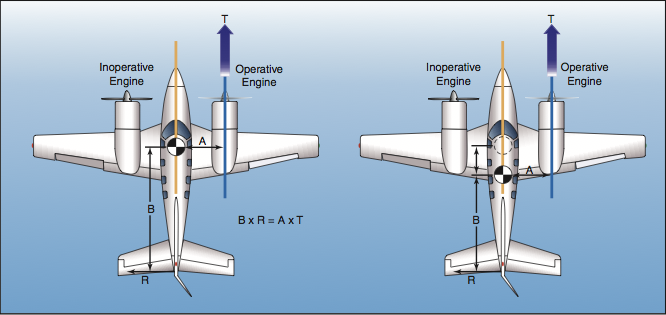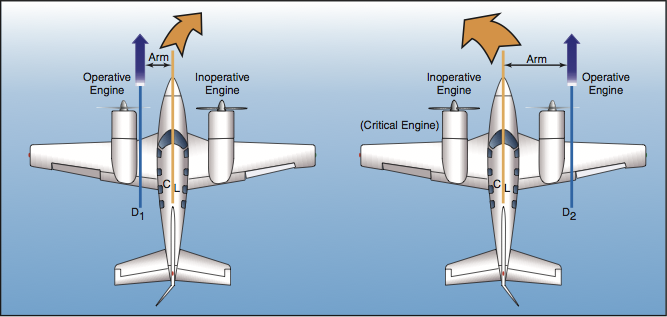Critical Engine
We made reference to a "critical engine" in the Vmc page. A critical engine is the engine which most adversely affects the performance and controllability of the aircraft when it fails. Not all multi-engine airplanes have a critical engine. Specifically, planes with counterrotating propellers, like the Piper Seminole, do not have one. That said, most high-performance multi-engine aircraft have a critical engine, and it is a topic with which you should be familiar.
What makes one engine have more effect on control and performance than the other? Remember P-A-S-T:
- P - P-factor
- A - Accelerated slipstream
- S - Slipstream
- T - Torque
P-Factor (Yaw)
The descending blade of a propeller produces more thrust. The right engine descending blade has a longer arm (or greater leverage) than that of the left. Thus, P-factor from the right engine produces more asymmetric thrust when the left fails, making the left the critical engine. See image below.
Accelerated slipstream (Roll)
The center of lift on the right engine is farther from the longitudinal axis, and it is closer on left side. This results in less negative lift on the tail which produces roll. Roll produced by loss of the left engine will be greater than that produced by loss of the right.
Spiraling Slipstream (Yaw)
The right engine slipstream spirals away from the tail, while that of the left engine hits the vertical stabilizer. Thus, when we lose the left engine there are more directional control problems, making it critical.
Torque (Roll)
Since propellers rotate clockwise, the aircraft will roll counterclockwise. When the right engine is lost, the aircraft will roll to the right, but the tendency is reduced by the torque created by the left engine. When the left engine is lost, the aircraft rolls to left and the torque produced by the right engine will add to left rolling tendency. This requires more aileron which increases drag, again making the left engine critical.

